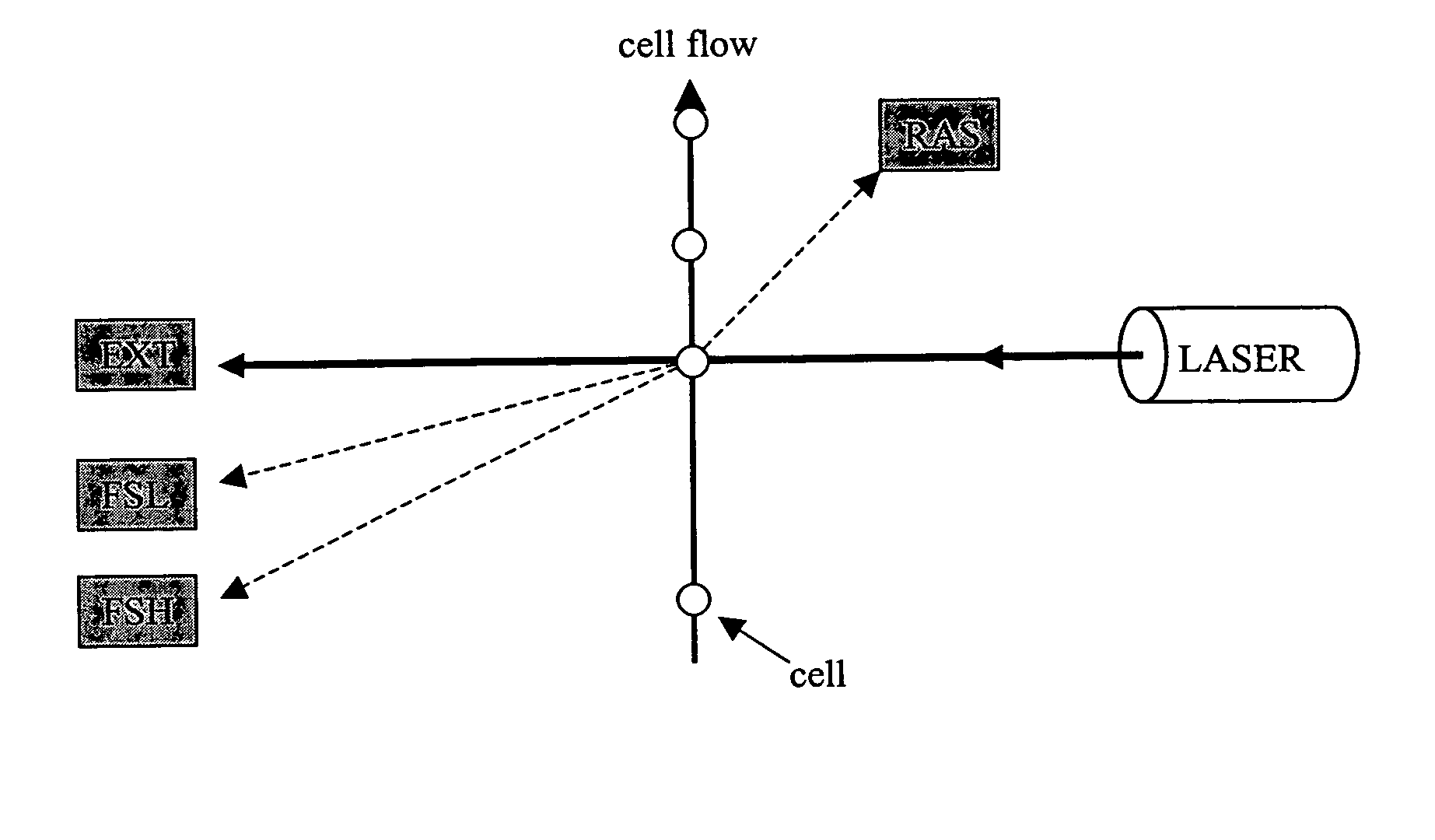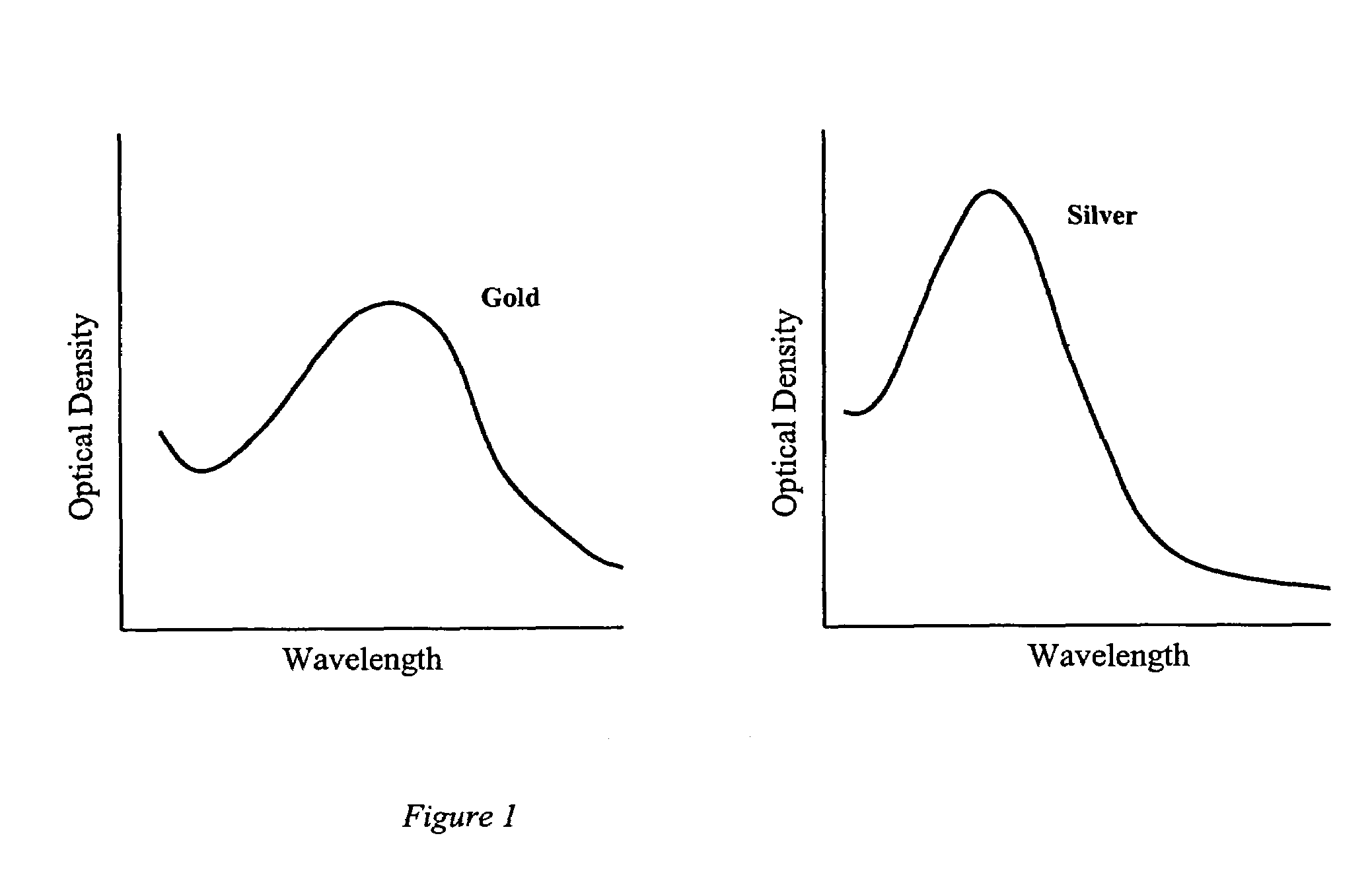Enhanced cellular assay method for use in flow cytometry or similar instruments using optically resonant particles
a cellular assay and flow cytometry technology, applied in material analysis, instruments, measurement devices, etc., can solve the problems of not always the same resonance wavelength and available laser wavelength, and achieve the effect of simple assay, inexpensive manufacturing, and low cos
- Summary
- Abstract
- Description
- Claims
- Application Information
AI Technical Summary
Benefits of technology
Problems solved by technology
Method used
Image
Examples
Embodiment Construction
[0026]This invention relates to the field of biological assays where cells can be classified and enumerated using flow cytometry optical instrumentation. The invention combines information from multi-angle, light scatter from the cell itself and multi-angle light scatter from small, optically resonant particles that are selectively bound to surface molecules on the cell to carry out classification and enumeration. This light scatter method enables an instrumentation system that is simple to use, inexpensive to build, and mechanically robust; making it suitable for use in remote clinical environments.
[0027]A. Optical Resonance and Methods of Optimizing the Detection ORP's:
[0028]The present invention uses small particles that are chemically pre-conjugated to molecules, such as antibodies, that bind selectively to sites on the surface of cells. The characteristic light scatter pattern of the cell is modified by the bound particles and this modification can be detected by the use of a m...
PUM
 Login to View More
Login to View More Abstract
Description
Claims
Application Information
 Login to View More
Login to View More - R&D
- Intellectual Property
- Life Sciences
- Materials
- Tech Scout
- Unparalleled Data Quality
- Higher Quality Content
- 60% Fewer Hallucinations
Browse by: Latest US Patents, China's latest patents, Technical Efficacy Thesaurus, Application Domain, Technology Topic, Popular Technical Reports.
© 2025 PatSnap. All rights reserved.Legal|Privacy policy|Modern Slavery Act Transparency Statement|Sitemap|About US| Contact US: help@patsnap.com



